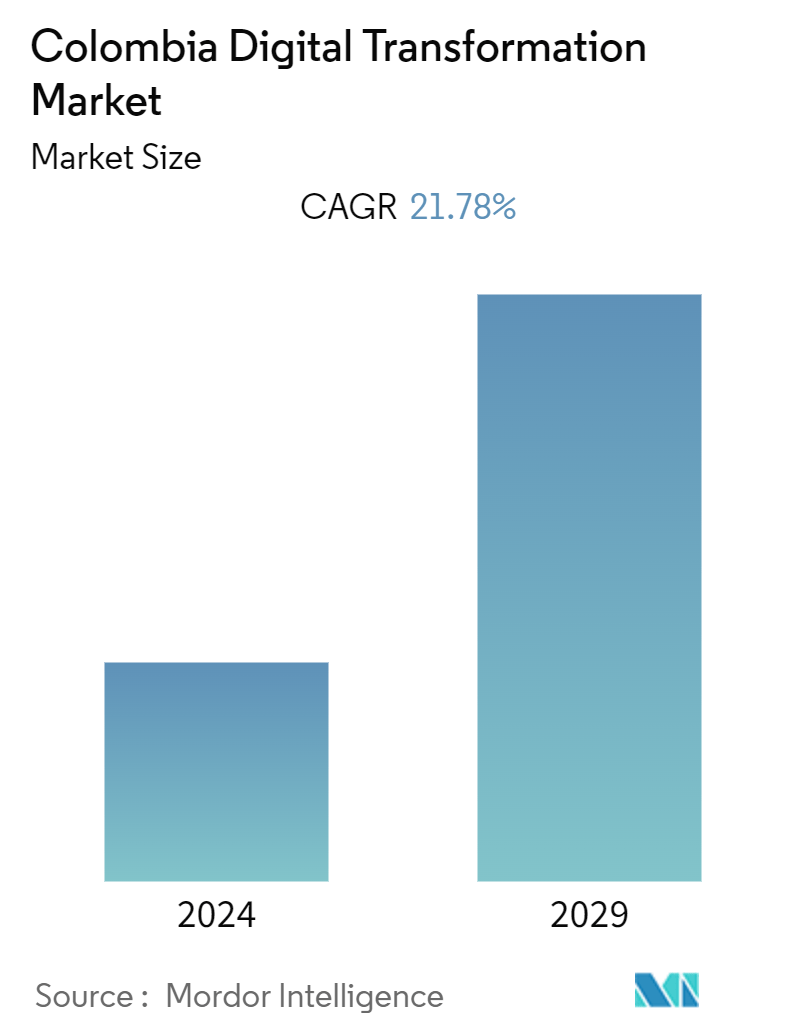Market Size of Colombia Digital Transformation Industry

| Study Period | 2019 - 2029 |
| Base Year For Estimation | 2023 |
| Forecast Data Period | 2024 - 2029 |
| Historical Data Period | 2019 - 2022 |
| CAGR (2024 - 2029) | 21.78 % |
| Market Concentration | Low |
Major Players
*Disclaimer: Major Players sorted in no particular order |
Colombia Digital Transformation Market Analysis
The Colombia Digital Transformation Market is expected to register a CAGR of 21.78% during the forecast period.
- The expansion of 4G and the introduction of 5G networks are creating new opportunities for digital services and solutions. Investments in fiber optic networks are improving internet connectivity in urban and rural areas, driving digital transformation initiatives. For instance, in June 2023, Nokia, a Finnish vendor, and Colombian carrier Claro, declared the completion of the initial phase of Colombia's most extensive 5G rollout, spanning 1,000 sites nationwide. As part of the agreement, Nokia provided equipment from its AirScale range tailored for indoor and outdoor settings. This included base stations, high-capacity Massive MIMO antennas, and remote radio head (RRH) solutions.
- Businesses are increasingly adopting cloud services for their scalability, flexibility, and cost efficiency. Local data centers are being developed in the country to meet the growing demand for data storage and management. These centers provide on-demand resources, allowing businesses to scale up or down based on their needs without the need for substantial upfront investments in physical infrastructure.
- In September 2023, a Columbia University professor offered a strategic blueprint to meet the rising demand for digital transformation. This roadmap was aimed to guide businesses in crafting and executing successful digital transformations, emphasizing the need for agility and resilience in the face of ongoing disruptions. The professor emphasized that companies need to shift from a planning-centric approach to managing uncertainties by assuming they know the unknown to a more adaptive model centered on experimentation.
- As per World Bank data, Colombia faces challenges, with less than 13% of its rural households having access to fixed internet. Limited access to high-speed internet and reliable connectivity hinders the widespread adoption of digital technologies. The initial high cost involved in digital transformation, including the purchase of advanced technologies, training, and integration, hinders small and medium enterprises operating in the country.
- Post-COVID-19, the Colombian government launched several initiatives to support digital transformation. These included investing in digital infrastructure, promoting digital literacy, and encouraging innovations in tech startups. The e-commerce sector saw significant growth as consumers focused on online shopping. This shift forced many traditional retailers to establish an online presence and optimize their digital sales channels.

